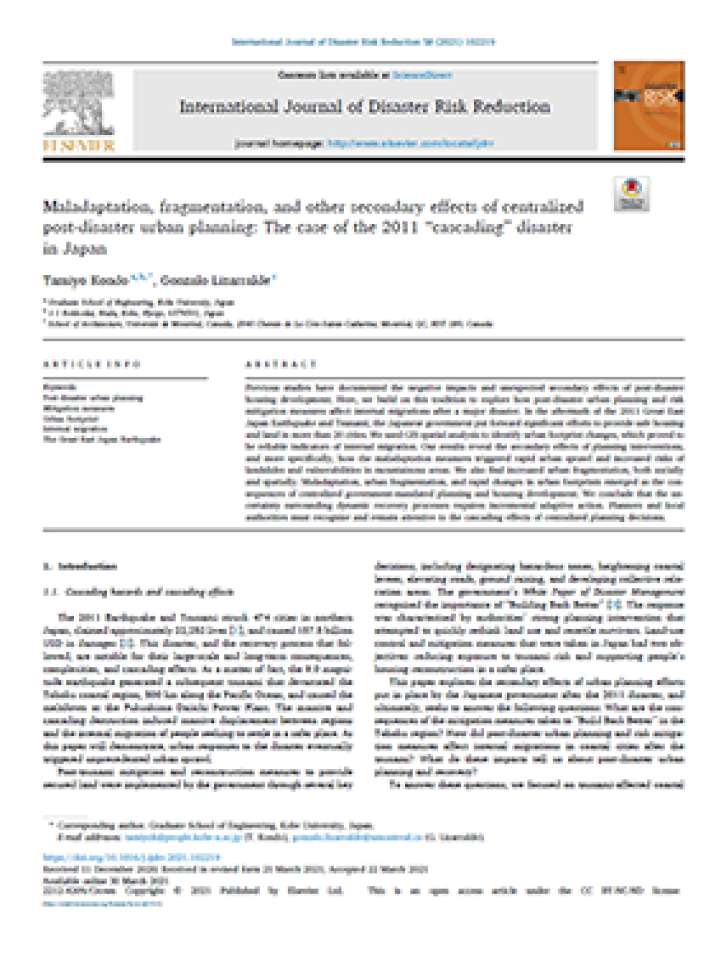Maladaptation, fragmentation, and other secondary effects of centralized post-disaster urban planning: The case of the 2011 “cascading” disaster in Japan
This report details how previous studies have documented the negative impacts and unexpected secondary effects of post-disaster housing development. Here, it builds on this tradition to explore how post-disaster urban planning and risk mitigation measures affect internal migrations after a major disaster.
In the aftermath of the 2011 Great East Japan Earthquake and Tsunami, the Japanese government put forward significant efforts to provide safe housing and land in more than 20 cities. The report used GIS spatial analysis to identify urban footprint changes, which proved to be reliable indicators of internal migration. Our results reveal the secondary effects of planning interventions, and more specifically, how the maladaptation measures triggered rapid urban sprawl and increased risks of landslides and vulnerabilities in mountainous areas.
It also finds increased urban fragmentation, both socially and spatially. Maladaptation, urban fragmentation, and rapid changes in urban footprints emerged as the consequences of centralized government-mandated planning and housing development. It concludes that the uncertainty surrounding dynamic recovery processes requires incremental adaptive action. Planners and local authorities must recognize and remain attentive to the cascading effects of centralized planning decisions.
Explore further
